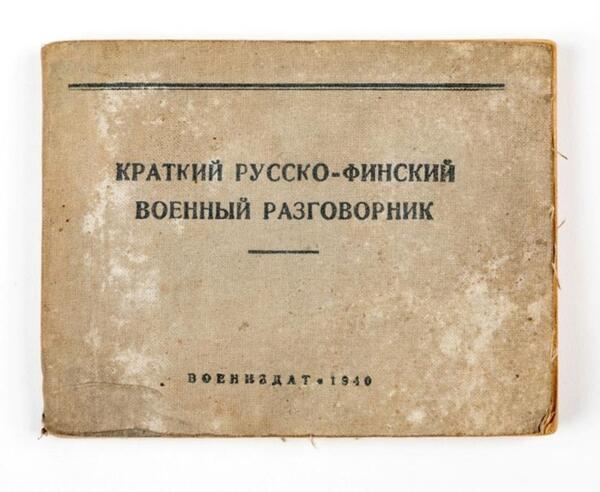A military phrasebook is a small book containing ready-made words and expressions adapted to the needs of the front. Military phrasebooks as a separate type of dictionary appeared at the turn of the 20th century in the German and Austrian armies. In the era of the First World War, such phrasebooks were intended mainly for officers.
In the USSR, attention was drawn to the issue of communication in foreign languages between soldiers, during times of active militarization of the country and the escalation of alarming trends in Germany in the early 1930s. About 10 phrasebooks in European and Oriental languages were published. The first phrase books had several drawbacks: they were too large and reflected a class approach with the hope for a world revolution.
In 1939, the Military Department developed a new format — a “Short Military Phrasebook”. They were smaller in size and had a more simple structure than previous versions. Long replies of the interlocutor were excluded and ideologically motivated content was almost eliminated. The phrasebook was designed for squad, platoon and company commanders with no initial knowledge of the enemy’s language. It was built around a system where the answer could be given with a gesture or one simple word. Nevertheless, the Winter War of 1939–1940 caught military translators by surprise, and only a month and a half after the start of hostilities, the edition of the “Short Russian-Finnish Military Phrase Book” was approved and printed.
The phrasebook consists of 21 topics, with the help of which a Red Army soldier could find out the identity of the prisoner, the structure, location and armament of the military unit, the location of roads, villages, lakes and rivers.
During the Soviet era, an extensive state network of censorship institutions existed. Surveillance of the press, radio and other mediums was especially intensified during the war. The phrasebook reflects the peculiarities of the era — the number of copies is not indicated thus concealing indirect information on the number of Soviet troops from the Finnish army. Censorship of printed works and protection of state secrets in mass media was carried out by the “General Directorate for the Protection of State Secrets in the Press” (Glavlit).
The 1940 edition of the Russian-Finnish phrasebook found application in the subsequent armed conflict — the Great Patriotic War, in which Finland sided with Germany.



